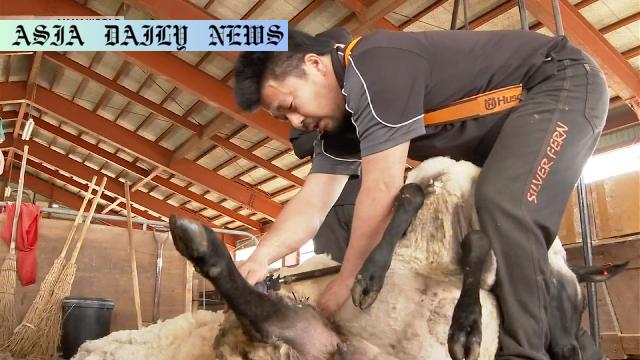Sheep Shearing: Event highlights shearing essentials for Hokkaido’s summer heat.

An Insightful Look at Sheep Shearing in Hokkaido
Sheep shearing is not just a seasonal activity in Hokkaido, Japan, but a deeply important task to ensure the well-being of the animals and the sustainability of wool production. As summer approaches, the wooly flocks in Shibetsu City, known as a hub for sheep farming, undergo meticulous shearing to prepare for the warmer months. This annual activity does not merely serve practical purposes but also educates residents and enthusiasts about the tradition and importance of proper sheep care.
The Event: Learning from Industry Experts
On a crisp Wednesday in Shibetsu City, a farm took a step further in promoting this essential practice by hosting an engaging event focused on sheep shearing. Participants included members of the city’s regional revitalization program, displaying a collaborative approach between local governance and the farming community. Oishi Shun, an experienced sheep shearer hailing from New Zealand, conducted the lessons. His expertise shone as he demonstrated techniques for efficiently and humanely shearing the sheep while maintaining a firm yet gentle grip on the animals.
The Importance of Proper Shearing
Shearing plays a vital role in maintaining the health of sheep. As Oishi emphasized during the event, wool that grows excessively long can lead to various complications, including itchiness, overheating, and mite infestations. Beyond animal welfare, the freshly sheared wool contributes significantly to local and global markets for textiles, making it a dual-purpose activity. It was clear that every attendee left with not only improved skills but also a deeper appreciation of the intricate relationship between farming, community, and commerce.
From Practical Learning to Community Empowerment
Events like these foster a sense of community by bringing people together for hands-on learning. New participants gained practical experience and forged strong connections with local industries. This is particularly important for towns like Shibetsu, where agriculture remains a key economic contributor. The event will leave a lasting legacy, emphasizing how thoughtful engagement benefits everyone involved—from the sheep to the farmers and event attendees alike.
A Seasonal Practice with Far-Reaching Impacts
The process of completing the shearing by the end of May reflects the careful planning required for such large-scale farming activities. Hokkaido’s sheep population isn’t just a source of livelihood; they also represent a commitment to preserving agriculture and traditional knowledge. With activities like these, Shibetsu City is setting benchmarks for how rural communities can modernize and remain relevant while holding on to traditional practices.
Commentary
The Intricacies of Sheep Shearing: A Reflection
The annual sheep-shearing season in Hokkaido represents more than just a routine farming task; it embodies the harmony between tradition, sustainability, and modern agricultural practices. Watching an event like the one in Shibetsu City unfolds a fascinating story about the importance of maintaining livestock health and ensuring their comfort during warmer months.
The Role of Education in Agriculture
What stands out most about the initiative is its focus on education. Having an experienced professional like Oishi Shun guide participants through the process demonstrates how knowledge-sharing can transform routine agricultural work into a learning experience. Allowing city revitalization program members to partake further bolsters urban-rural ties, which are critical for sustaining local economies. The event upheld an inclusive approach, showcasing how farming communities thrive when they engage outside their usual circles.
Linking Tradition to Modern Needs
Shearing highlights the delicate balance between respecting old traditions and catering to modern market demands. Events like these also shed light on the multiple benefits of an age-old practice, from ensuring animal welfare to contributing to global textile industries. It’s fascinating to see how rural towns like Shibetsu are finding innovative ways to reignite their cultural essence while navigating today’s economic demands. Such practices are more than just functional; they are symbolic of resilience and adaptation in changing times.


